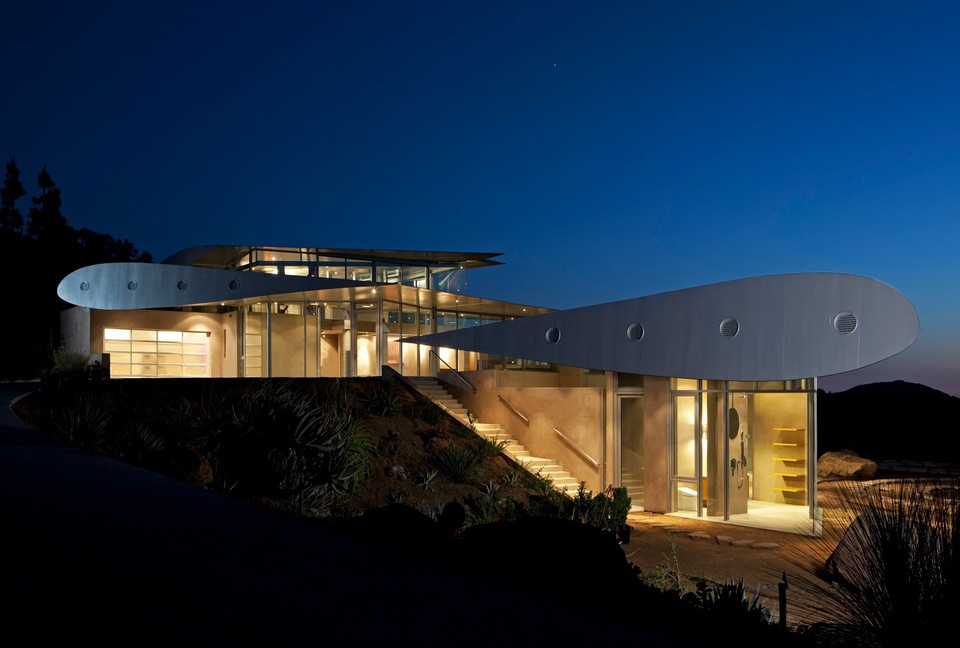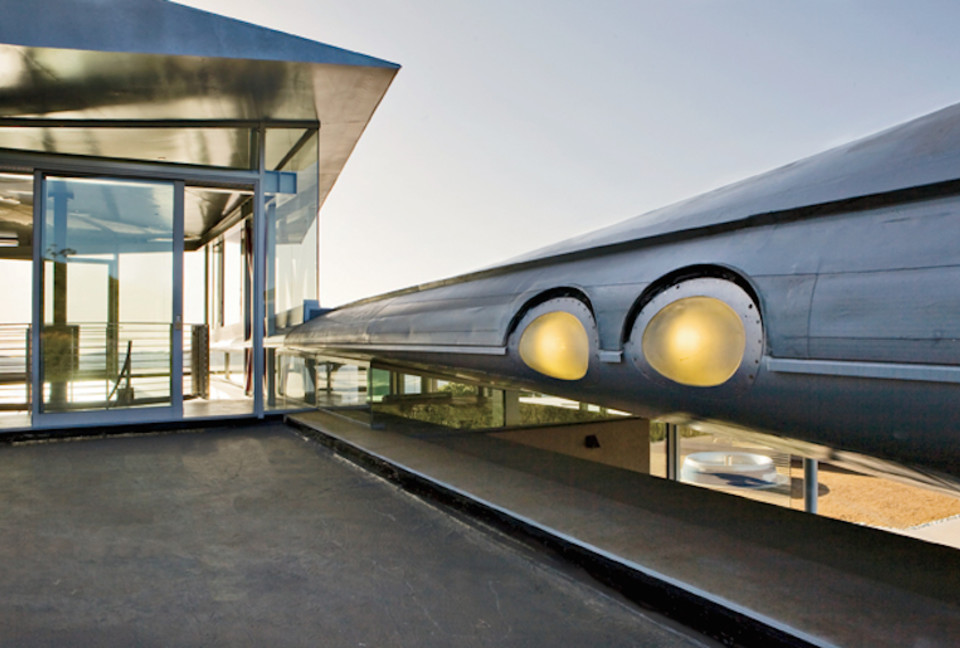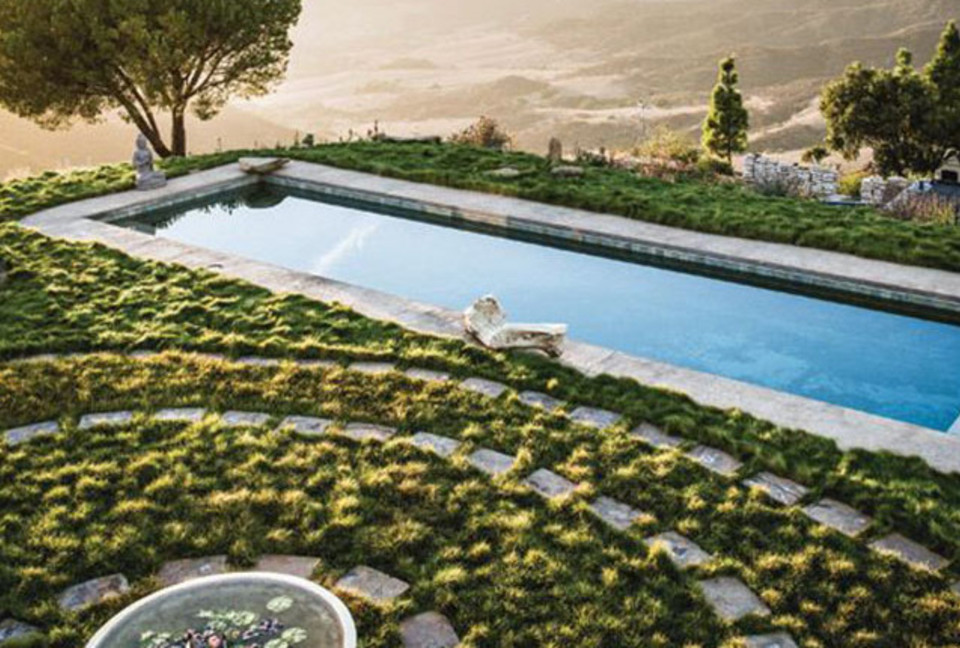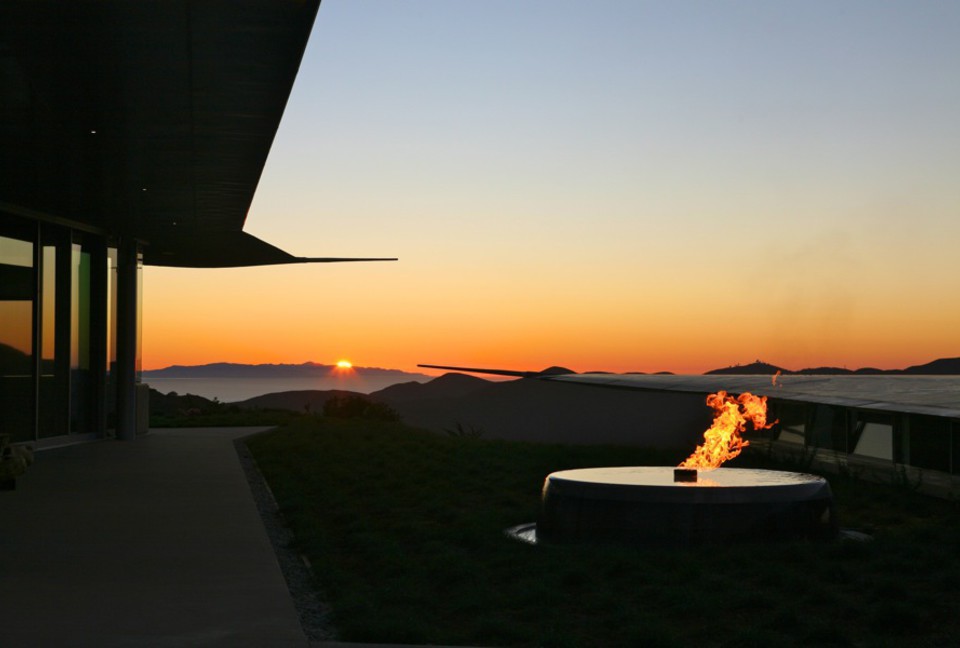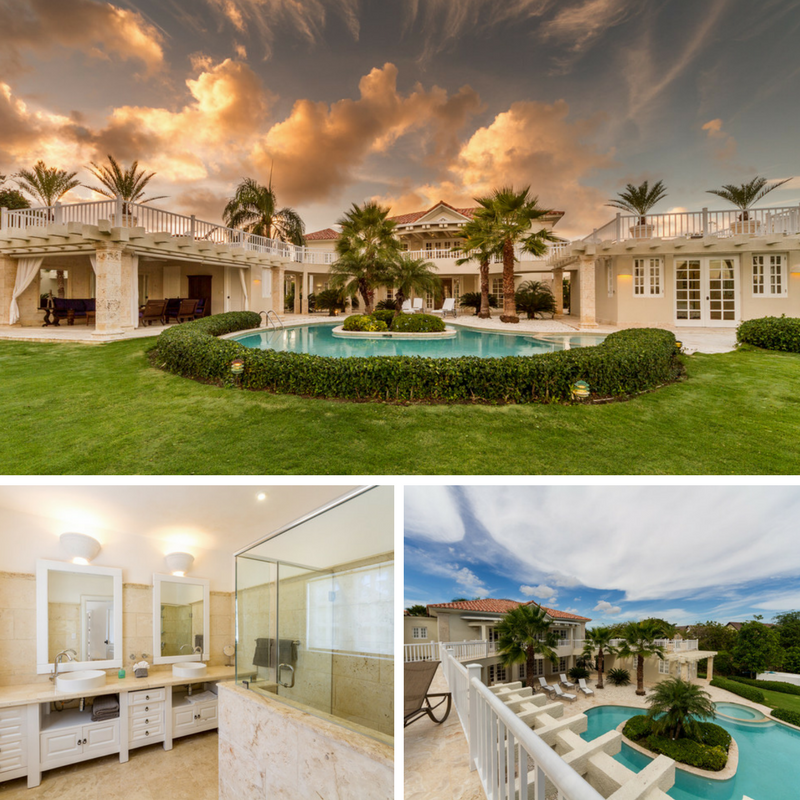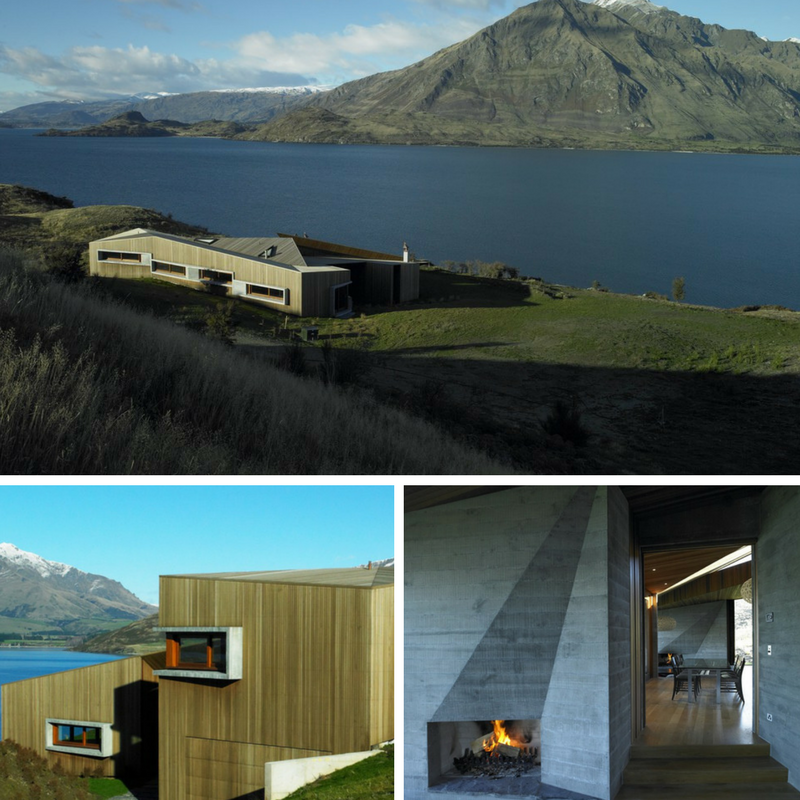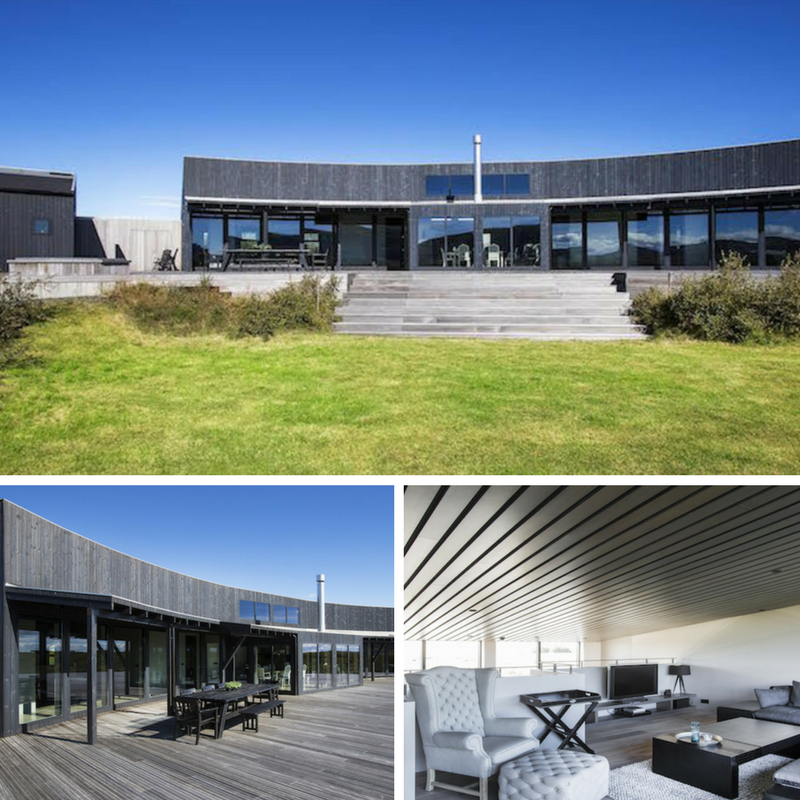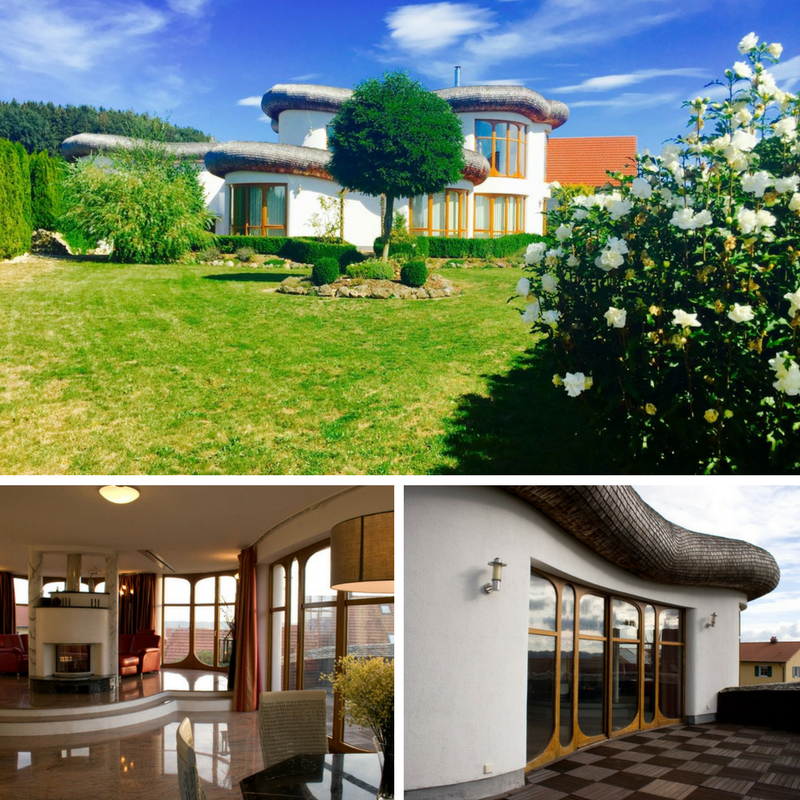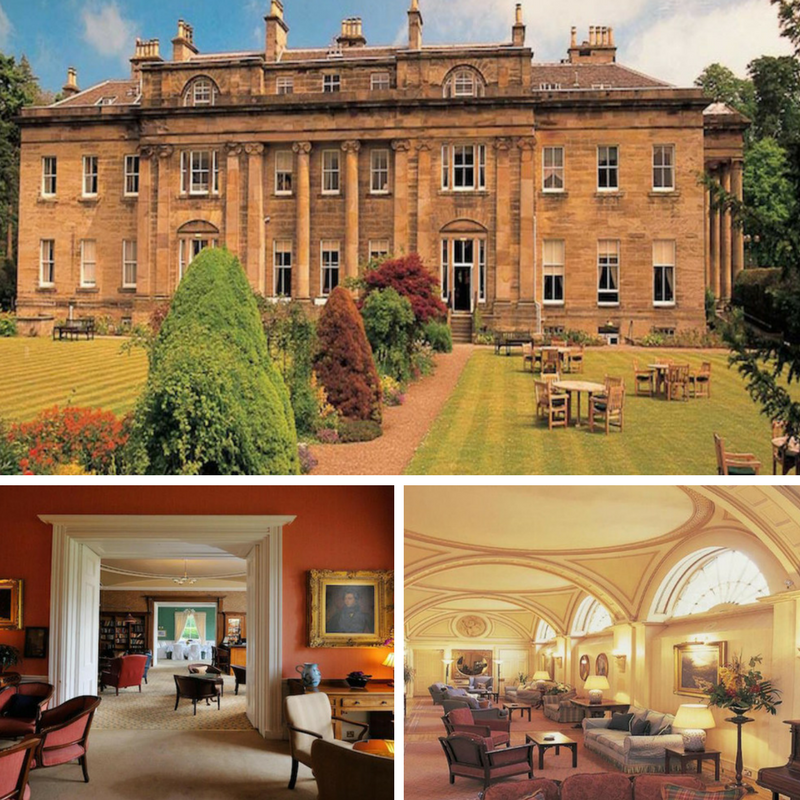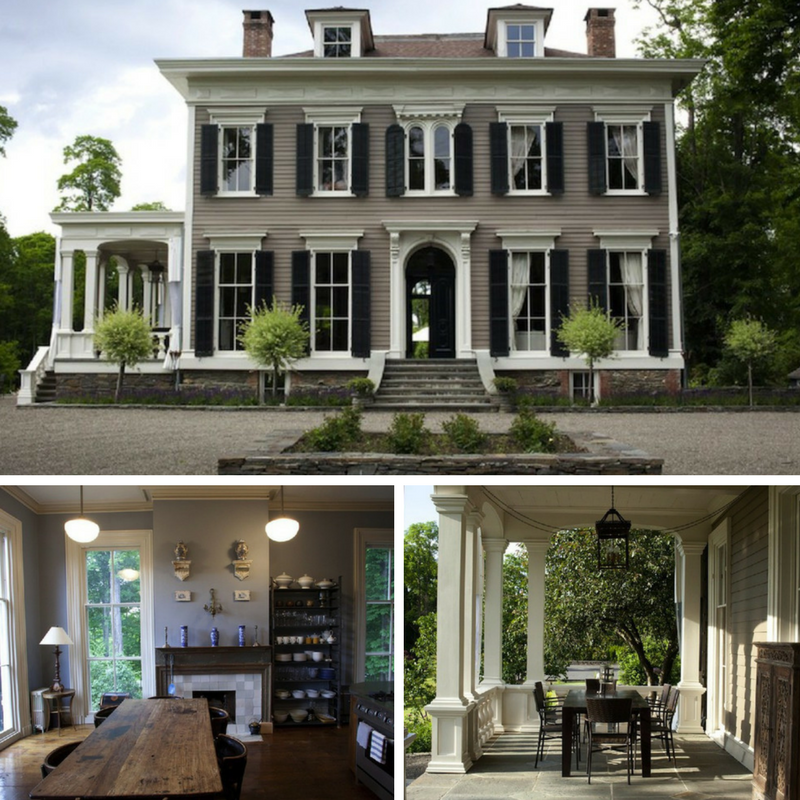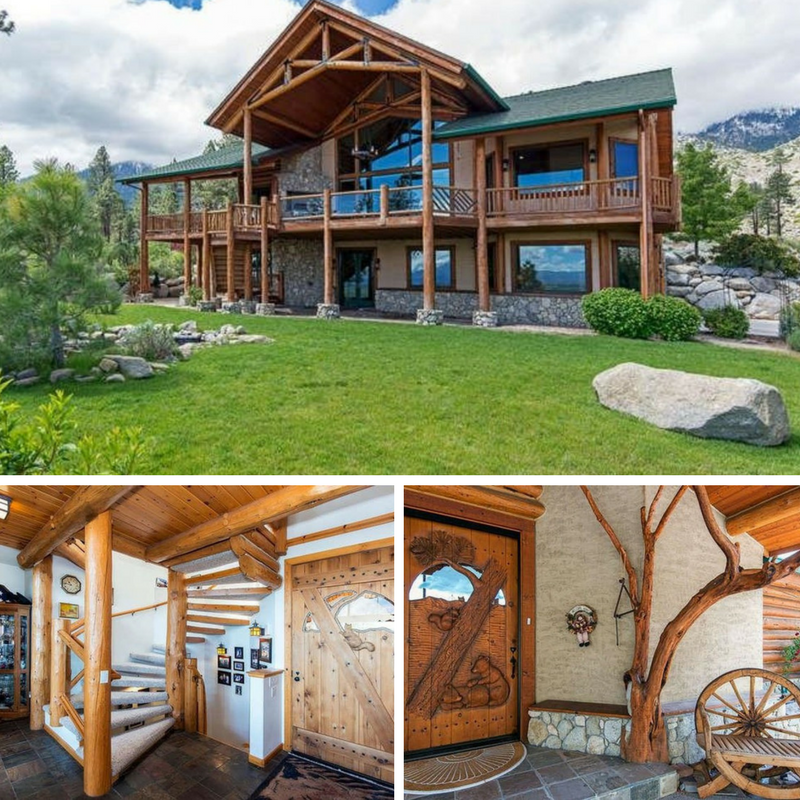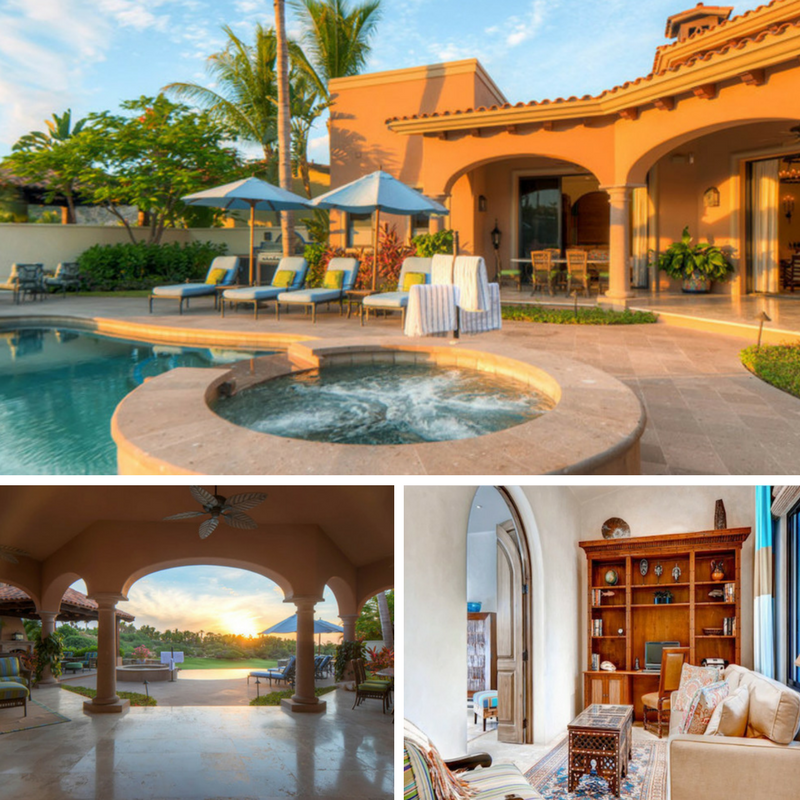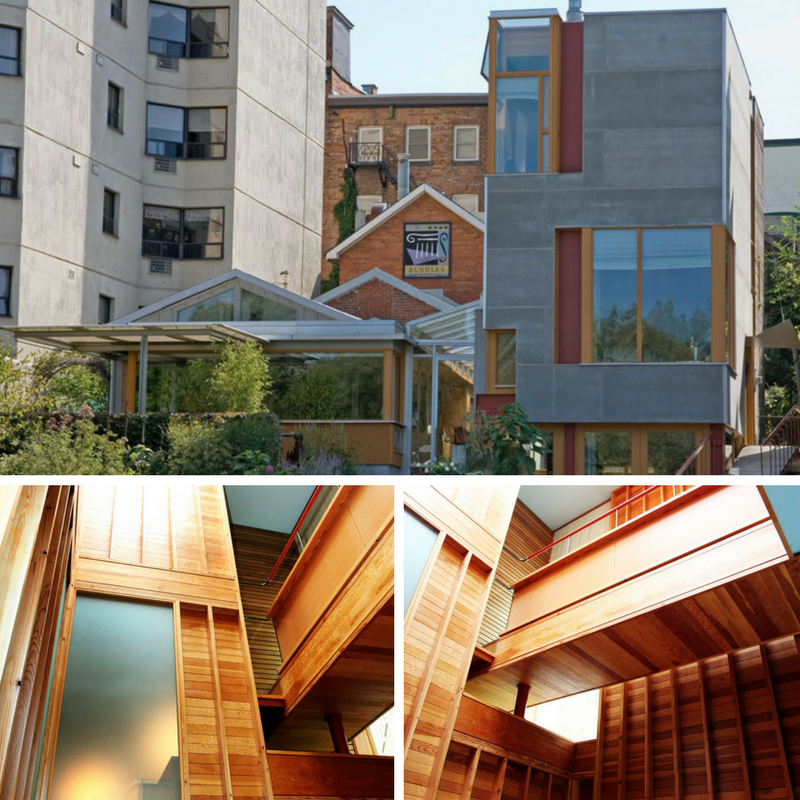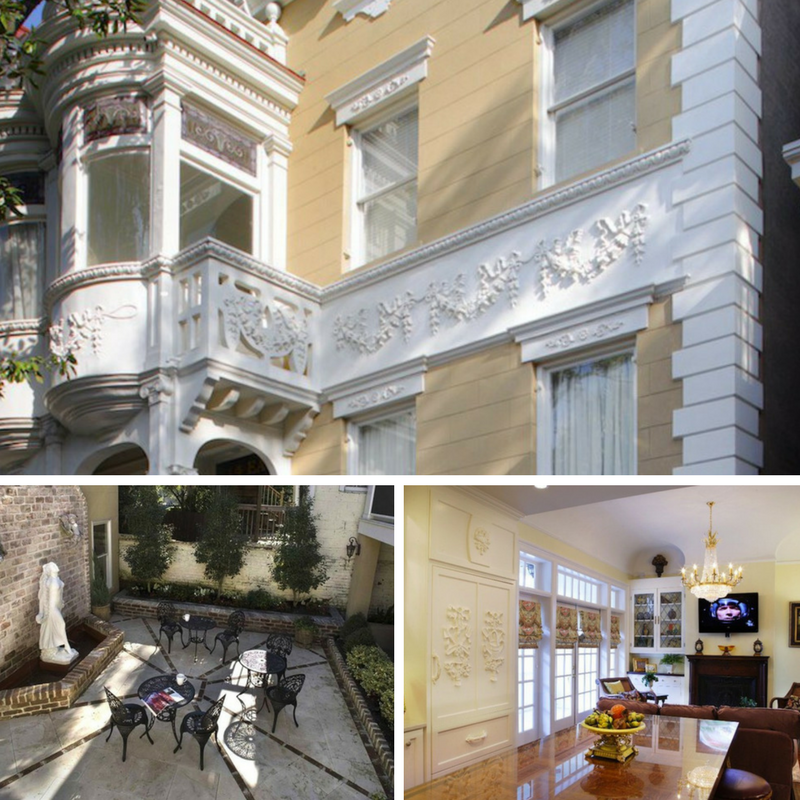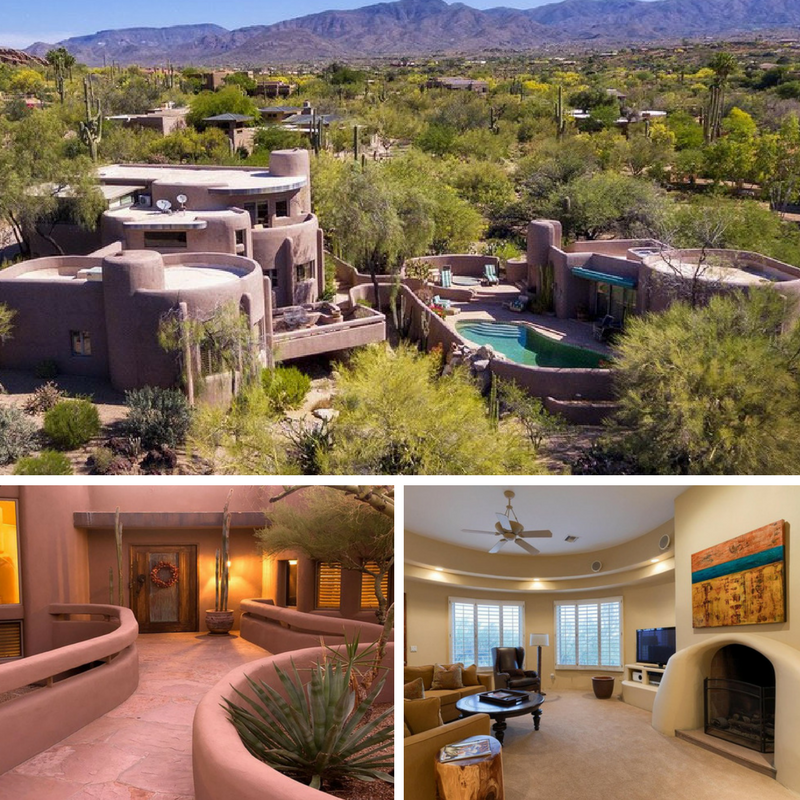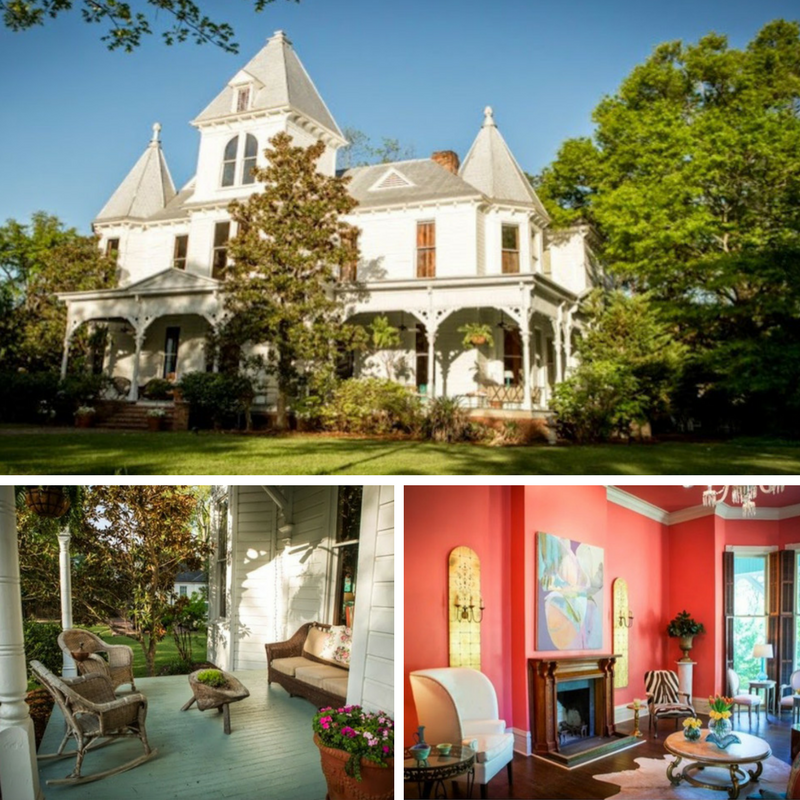On February 15th, 2018, the THIRDHOME team added a gorgeous property in Sydney, Australia. That property happened to be the 10,000th property added to our luxury home exchange club.
“I always knew we would reach 10,000, but to actually see it, that’s something else.”-THIRDHOME Founder & CEO, Wade Shealy
THIRDHOME‘s 10,000th property, the Pacific House, is a modern beach home in Palm Beach, just north of Sydney.

Patrick and Karen, the property owners, are rightfully proud of their home. Its construction was carried out by the notable Sydney architect studio, Casey Brown.
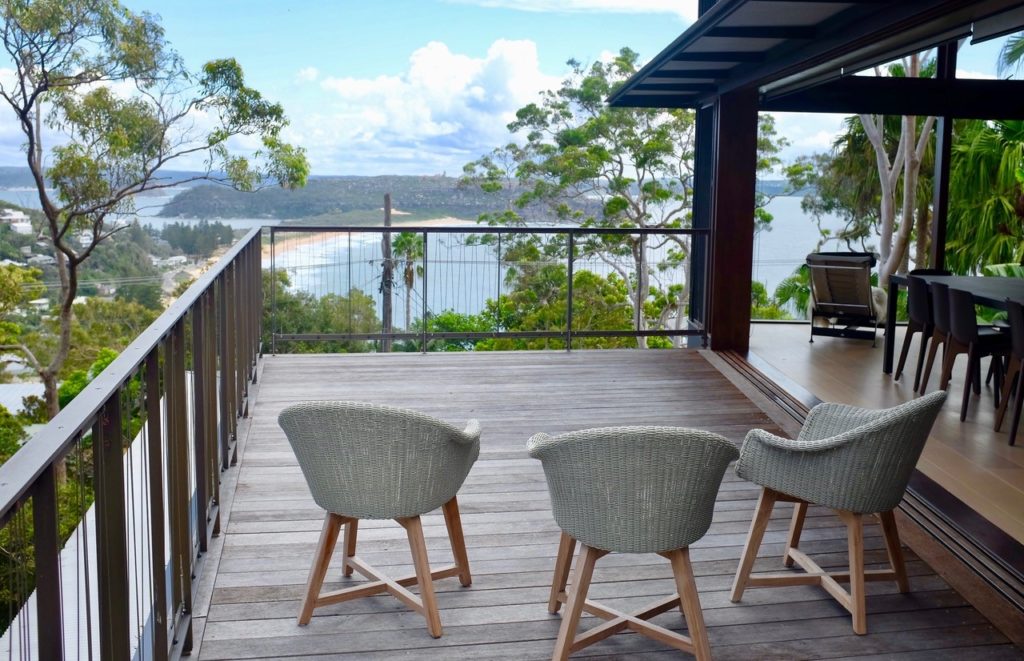
Beyond a stunning design, the home features stellar views of Palm Beach and the New South Wales coastline. There’s also a plunge pool overlooking the water.

The sleek interior has an open layout and floor-to-ceiling windows. Those stellar coastline views follow you throughout the home, even to the master bedroom.

The property has a total of 3 bedrooms; there are 2 queens and a king-sized bed. With room for 6 people, this property is perfect for a Sydney beachside getaway!
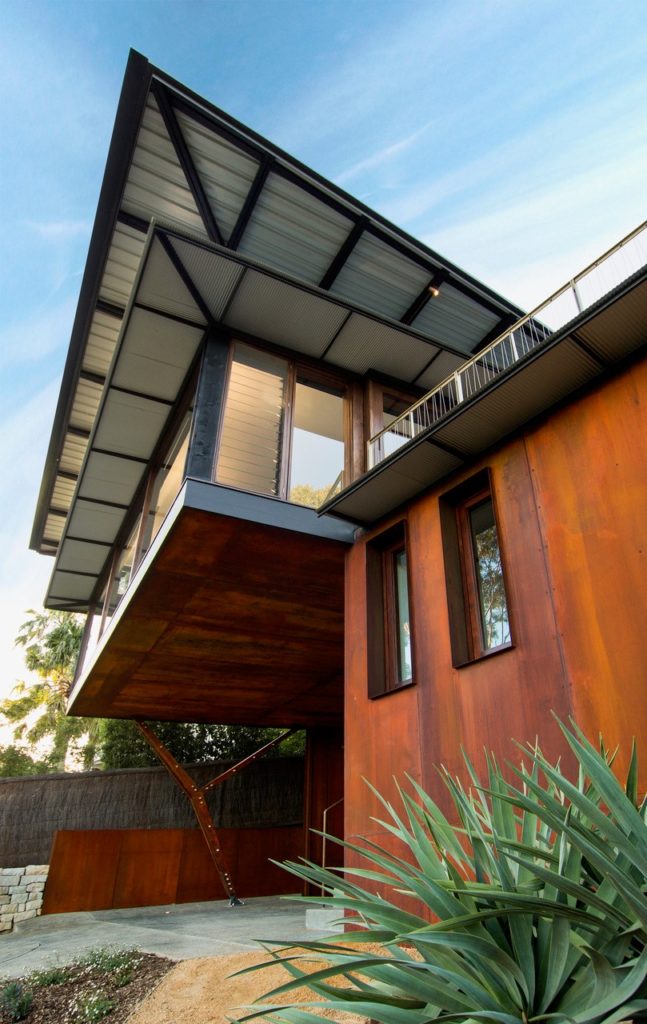
Keep an eye on this property for your next Australian adventure!
While we celebrate the 10,000th property, we also celebrate every other THIRDHOME luxury home exchange club member who has contributed to this milestone. We are thankful for each and every home and owner that has added to our portfolio. We raise our glasses to you!
The late Sir Winston Churchill once said “We shape our buildings thereafter they shape us.” It’s no secret that a house and its architecture are often a reflection of those who call it home. Architecture can say a lot about societal values, history, art and culture. The most important question to ask when evaluating the architectural style of a home is this; does the home serve form or function? In other words, how much am I willing to sacrifice for home aesthetic versus home utility and vice versa. These are things to consider not only when buying a new home, but when experiencing someone else’s home…
Architectural style can have a major impact on your experience. Which one is right for you?
As connoisseurs of second homes we at THIRDHOME will walk you through architectural styles and movements using homes from our extensive and luxurious portfolio of member properties. Find your style below by exploring some of the styles you’re sure to encounter when browsing for your next home purchase, home exchange or rental trip.
Classical
For reference, Villa Blanca, pictured above, has many Classical features. Western architecture is heavily influenced by the classical civilizations, Rome and Greece. Roman architect Vitruvius set forth three principles of great architecture that would go on to influence the Classical style: durability, utility, and beauty. Classical architects prioritized form and function equally, while their durability can still be seen in structures like The Coliseum. Classical architects thought they could achieve beauty through math and symmetry (i.e. The Golden Ratio). The home above has many classical features including columns (though not classical) supporting a simple entablature, symmetrical layout, materials like marble or stone and a facade with a decorative pediment. A home like this may seem to achieve both form and function in equal measure, but other schools of architecture have posed alternatives. Nevertheless, a house like this is sure to make you feel like a Roman Emporer.
Contemporary
This New Zealand Lake House is a wonderful example of Contemporary architecture. Simply put, contemporary architecture is the architecture of today (not to be confused with modernism). It has no predetermined rules or guidelines, although it has tended to favor the use of straight lines and unique building materials. This does not mean that any building built today is considered contemporary. A new home could be built with another architectural movement in mind. Contemporary architecture strives to buck the tradition of older movements and create something new. The property pictured above primarily uses straight lines to achieve creative living spaces and harmonious relationship with the surrounding landscape. Large and unique windows are also regularly found in contemporary houses. The next time you book a stay at a home with contemporary features take notice of the asymmetrical patters, building materials and natural lighting.
Critical Regionalism
A style of architecture that was formulated as a response to the lack of character found in modernist styles (not to be confused with contemporary), critical regionalism sought to incorporate the context of culture, landscape and history into its buildings. Seeing as this style is dependent on location and context, no two buildings look alike. Pictured above, is a home in Iceland that was built with the Northern Lights in mind. Floor to ceiling windows, a crescent-shaped layout and outdoor space that eases into the natural landscape make for a home that lends itself to spectating natural wonders. If it were located anywhere else in the world it might just be considered a contemporary home. But its attention to regional context puts it into the exclusive club of critical regionalism.
Expressionist (post-modernist)
Expressionism can be traced back to architects living in the first few decades of the 20th century. This is a style that favors form over function (although both can be accomplished). The primary features of an expressionist home is a distortion of form to achieve an emotional response, a proclivity toward symbolic models over pragmatic design and a unification of building materials to create the impression of a monolith. The Sydney Opera House is one of the most famous examples of this type of architecture. It’s sparsely used in residential design, but when done with creativity in mind, a home such as the Bavarian Chateau above can appear to be from a different world. If you want an escape from reality book an expressionist home.
Farm style
A farmhouse or country house label speaks more to the function of the house than the form. Farmhouses tend to emphasize the simplicities of rural lifestyles and the nature that surround them. Symmetry, efficient use of space, horizontal siding, a fireplace and plenty of porch space are the characteristics of a farmhouse. Pictured above is an abnormal farmhouse, but a farmhouse all the same. In lieu of an extended porch and a flared roof, this home incorporates the functionality of the porch into the midsection of the home. You will notice that American styles were influenced greatly by readily available resources and classical ideas of architecture. Note the widely pitched timber roof and the pediment it forms. The beauty of the great outdoors comes directly to your doorstep in farm and country-style homes.
Georgian
Named for King George I, II and III who all reigned over the English colonies where this style of home became popularized, this style of home is known for its classical features and heavily ornamented interiors. They were a common style of home for the wealthy denizens of London during the 18th century. Interiors usually feature vaulted ceilings, window pediments and even more columns. Georgian style differs from place to place, but most maintain these central features and a propensity for overdecorated interiors. If you want to feel like Barry Lyndon, look no further than an opulent Georgian spectacle like the Balbirnie House pictured above.
International
This was a style was adopted post-World War II to help maximize space in rapidly growing cities. Its flat rectangular features transcended location and were often criticized by architects who valued regionalism (spurning an offshoot of the post-modern movement that birthed Critical Regionalism). But International design did have its appeal. It favored flat planes, open spaces and glass and steel. Ornamentation is sparse in International style, but it could be argued that the clean geometric design lent to a beauty all its own. If you enjoy clean open concept living consider International style, like White Villa pictured above, for your next homestay.
Italianate
Another brief return to classical styles (but with less rigidity in design), Italianate architecture was a 19th-century modernization of Italian Renaissance architecture. These homes feature the facade symmetry and columns of classical styles and also favor a low-pitch or flat roof. Although the front of the house by appearance his very symmetrical, the actual layout of the house can be an “L” or “U” layout. The inviting facade of the house has pediments in the doors and windows, bay windows, wide eaves supported by corbels and balconies. They share many features with Georgian style homes but are less heavily ornamented. Italianate was popularized in the UK and the East Coast of the United States. If you want to feel like you’re staying in a Tuscan countryside villa with the comforts of an updated home, consider an Italianate house for your next stay.
Log cabin
The modern log cabin style came into fashion after Swedish immigrants settled the American West in the late 19th century. Frontier cabins were sparse and incredibly utilitarian, but the modernized version of these cabins have become much more pleasing to the eye, as seen in the Tahoe Nevada Log Home above. Timber and stone are the mainstays of this architectural style. Although they are typically very functional they adhere to form and beauty more than the American Farmhouse style. Wood carved interiors, timber frames, high-pitched roofs and plenty of outdoor space make for homes that seem to be an embodiment of surrounding mountains.
Mediterranean
Influenced by early Spanish, Italian and Portuguese styles, Mediterranean style homes are easily identifiable. Red tiled roofs, stucco exteriors, curved parapets, decorative tile and ironwork, archways, terraces and balconies are all notable features of the Mediterranean style. It’s very likely that you’ve stayed at a Mediterranean style home given their popularity in vacation destinations and warmer climates. They often have low and wide roofs with far-spread eaves to offer shade in sunny locations. If you stay in a Mediterranean home like the one featured above, you may feel like a Spanish viceroy given the style’s Old World feel and delightful rusticity.
Modernist
Remember International Style? Flat planes, open spaces, the simplicity of form and no ornamentation are also features of the Modernist style. International style was the global adoption and adaptation of the original German Modernist style that was conceived in the 1920’s. After the Nazi regime condemned the Modernist style, the thought leaders behind the sleek style traveled to the United States. The “Tower House” pictured above was inspired by a late modernist, Tadao Ando, who was a Japanese architect that integrated both Eastern and Western styles into his buildings. This home is vertical by design, unlike the more horizontal International style, but still, features many of the core components of Modernism. Try booking a stay at a Modernist property, like the Tower House above, to buck your perception of the traditional home layout.
Neoclassical (Beaux Arts)
You’ll see this return to the classical style in many buildings in Chicago, given its popularity during the 1893 World’s Columbian Exposition. Featuring heavy surface ornamentation, symmetrical design, flat roofs, a raised first story and a hierarchy of space, Beaux Arts style was the classical response to the rise of International and Modernist styles in the early 20th century. Identifying a Beaux Arts style from other classical styles can be tricky, but try looking for excessive embellishment in plasterwork, decorative mascarons and ornate scrollwork. Sculptures and other artwork are typically incorporated into the architecture to lend a unique personality to each and every building. In the home above, you’ll notice a great amount of detail in the cornices, entablature, molding and sculpture work. If the modernist style doesn’t resonate with you then maybe a neoclassical approach will.
Pueblo style
Pueblo revival spawned from the cultural recesses of New Mexico and Arizona in the 1920’s and 1930’s. Emulating the styles of the Puebloan tribe, specifically the city of Taos, New Mexico, the pueblo revival featured rugged earth tones and rounded designs that integrated into the surrounding desert landscapes. These houses typically have flat roofs, stucco walls, exposed beams, oddly shaped parapets and decorated corbels. More modern interpretations, as shown above, share the spirit of cultural regionalism while updating the functional aspects of the home. The next time you’re exploring the American Southwest, explore the regions culture by staying in a Pueblo revival home.
Sustainable
Also known as eco-friendly architecture, this style has no set boundaries and is lumped in with the uncategorized masses of contemporary architecture. These homes emphasize leaving small ecological footprints by way of creative use of building materials, energy efficient design and incorporation of eco-friendly fixtures such as solar panels or rain collection devices. Villa Punto Vista pictured above, and recently featured in The Best Job on the Planet, was designed by THIRDHOME member David Konwiser. His website says the following about his eye toward sustainability, “Once the structure was completed we then incorporated as many recycled and locally-sourced building materials as possible. Recycled glass was utilized on the villa’s exterior and innovative roofing tiles made from recycled plastic bags were selected. Only sustainably-harvested teak wood was sourced for every artisan-crafted wood element and detail throughout, as was locally quarried rose-sandstone.” If ecological preservation is important to you then try booking a sustainably designed home on your next trip.
Victorian
And one last trip to classical revival styles! Following the reign of Georgian architecture, Victorian arrived with a more of a Gothic twist. They’re especially known for their wrap-around porches, towers and turrets. Unlike the uniform facade design of Georgian homes, Victorian homes, like The White House pictured above, favored asymmetrical design and unique roof lines. You’ll also find decorative roof trimming and corbels on the facade, making for an elaborate entrance. Extravagance was key to this architectural style but it features less overt structural ornamentation than Beaux Arts or Georgian styles, relying more on uniqueness in layout to build its personality. If you want to visit a house where each room is a character in itself, try booking a Victorian home.
There are far too many architectural styles to cover in one blog post and the list continues to grow. As architecture evolves, creating innumerable style choices, one or two are bound to fit any personality. So, what is your style? A little classical with a hint of post 20th century modern? Contemporary through and through? You can only own so many homes and styles in a lifetime, but with a second home you can visit countless examples of moments in architectural history by way of a THIRDHOME.
Click here to see all the architectural styles available for your next trip.
“Woman to build house out of 747,” read a BBC headline in April of 2006. It’s been 11 years, and the saga of Francie Rehwald’s famous Malibu Wing House continues. Francie joined THIRDHOME in 2013 after a friend told her about the club. Since joining she’s hosted 14 guests through the program. Each stay is accompanied by a glowing review of both Francie and her unique property.
“Anyone seeking a restorative aesthetic experience with luxurious amenities will not be disappointed.”-Andrew 5 stars
“This is one very special home … a site to behold, an engineering masterpiece, something only a few may get to be a part of … but what a special week.”-Frank 5 stars
“I have nothing but the very best things to say about the incredible wing house and the welcome we received from Francie”-Chris 5 stars
THIRDHOME had the opportunity to speak with Francie after she offered a week to be used for a special Curated Journey featuring the Los Angeles Food and Wine Festival. Read below to hear what Francie Rehwald loves about The Malibu Wing House and why you’ll love it too.
What was the inspiration for the Wing House?
Using a 747 was David Hertz’s idea (the architect). I’ve always considered myself experimental, Avante-Garde and into contemporary architecture. And I really loved the idea of recycling to help build my home.
What do you love most about the Wing House?
I’m just so grateful to be here. I have such an appreciation for the natural environment found in the hills and the architecture. The wings [of the 747] became the roof structure and ceiling. Every night when I’m in the pool or Jacuzzi and I look up and see that 135-foot swoop, it’s phenomenal and so beautiful. Every day I’m in awe….I feel gobsmacked! That’s how I feel! The mountain range is spectacular it’s like something you’d see in South America.
Do you have any neighbors?
The property is on 55 acres and it’s about a 5-minute drive to the closest neighbor. You can see houses from here, but they’re far off in the distance. It’s very peaceful and private up here.
For members that might be considering attending the LA Wine and Art Festival, and staying at The Wing House, what are some of the must-visit locations in the area?
One of my favorite restaurants is south from here at the beach. It’s called Sunset. You need to go on Tuesday when it’s not so crowded. Lots of locals go there. Malibu Farm Restaurant on Malibu Pier is delicious and has a great view. Each Saturday morning, I go to Thorne Family Farms to get fresh fruits and vegetables. From here you’re only 45 minutes from Ojai which is a cute little town, and you’re also an hour from Santa Barbara.
Any memorable comments from guests?
I get people all the time that say, “I had plans to go to the museum and do this and do that, but I just couldn’t leave!” others do make it out to all the attractions and say they couldn’t wait to be back home [to the Wing House].
Once I had a film executive who told me, “Every day I’m going to be gone for meetings.” When I followed up, he told me that he’d held all of his meetings at The Wing House instead because he just didn’t want to leave!
What are some of your favorite amenities?
The house has a regulation size bocce ball court, a 60 ft pool and chickens!
The Curated Journey to The Wing House- featuring the LA Food and Wine Festival will also feature a friend of yours, Edward Goldman. Can you tell us about him?
Oh yes, Edward is a very well-known art critic in the area. He’s hosted the show, Art Talk on KCRW for as long as I can remember (Goldman started in 1988). He used to work for the famous Hermitage Art Museum in St. Petersburg, Russia. A mutual friend said we should meet, and so we met at a Pasta and Poetry party. He wanted to see the architecture of the house so I invited him out.
Any local wine recommendations for first timers to the area?
I just had a tasty Rosé from Malibu Rocky Oaks Estate Vineyards.
Anything else you’d like members to know about?
Yes, The Wing House is having a fundraiser on the 14th of October for Liberty Canyon Wildlife Crossing. They partner with the local park service to help pumas and mountain lions. Natural habitats have been blocked off by freeways and their genetic profile is being shrunk. It’s a wonderful cause that ties into what I love about The Wing House- its natural beauty and preserving it.

